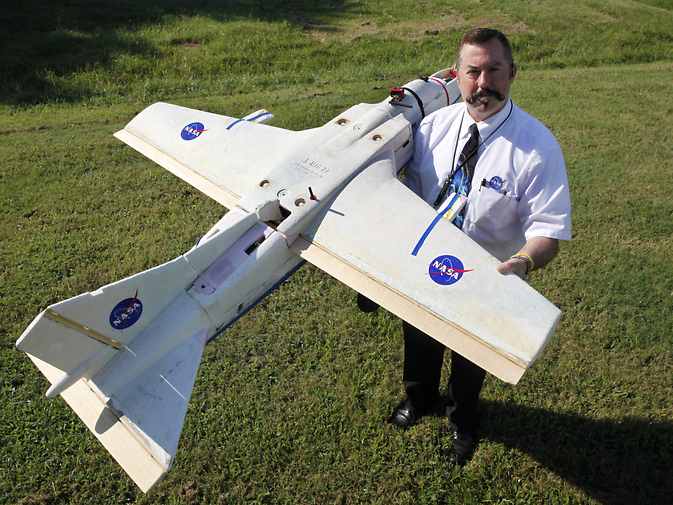Three years ago, a forest fire raged for four months in the Great Dismal Swamp National Wildlife Refuge on the Virginia-North Carolina border. Living nearby, Mike Logan, a NASA researcher in unmanned aerial systems (UAS), spent weeks breathing in the peat bog smoke that traveled as far north as Maryland.
Logan had an idea. “I made a phone call to the local fire captain and learned most fires are caused by lightning strikes and the only way they can spot them is by hiring an aircraft to do an aerial survey of the huge swamp. So I figured why not use a UAV as a fire detector?”
Two major fires since 2008 caused by lightning strikes in the 50,000-square-acre refuge required more than $10 million each to extinguish, according to the U.S. Fish and Wildlife Service (FWS). A better method for early fire detection could save millions of dollars for taxpayers.
“The FWS is evaluating the feasibility of airborne unmanned platforms and their ability to offer a safer and more cost-effective alternative for surveillance immediately following thunderstorm activity,” said Great Dismal Swamp Refuge Manager Chris Lowie. “The agency hopes to see a significant decrease in cost to survey the area, as well as a reduction in time to detect nascent fires, which could potentially save millions of dollars to the taxpayer in firefighting costs,” added Lowie.
 The drones carry two cameras. One is a nose camera that can see smoke plumes rising, the other is an infrared camera that points down, for finding hot spots by detecting heat signatures. The transmissions can be viewed on a laptop computer in a mobile ground station.
The drones carry two cameras. One is a nose camera that can see smoke plumes rising, the other is an infrared camera that points down, for finding hot spots by detecting heat signatures. The transmissions can be viewed on a laptop computer in a mobile ground station.
Logan says the drone, which weighs about 15 pounds and has an almost six-foot wingspan, has a range of about eight miles and can stay aloft as long as an hour, before the batteries need recharging.
(WATCH a NASA video of the drone below)
Image Credit: NASA Langley/David C. Bowman




















